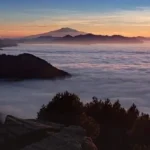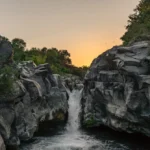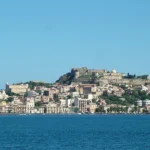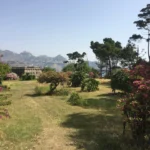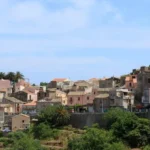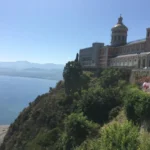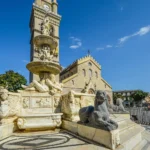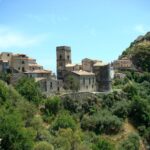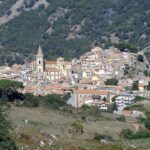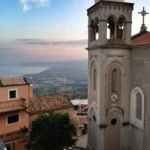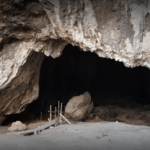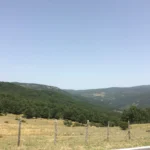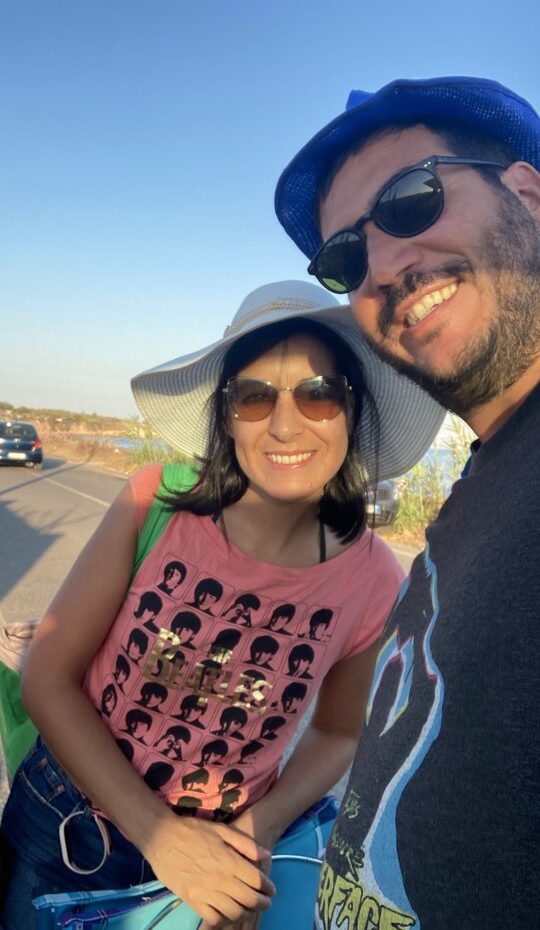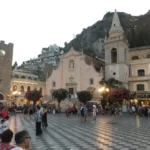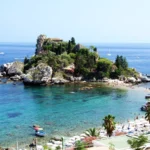Last Updated on 11 February 2025
Introduction
In this article you will find out how to get to and what to see on the Aeolian Islands, a UNESCO World Heritage Site. It is a volcanic archipelago set in the heart of the Tyrrhenian Sea, a true jewel of southern Italy. This set of seven islands, each with its own unique beauty, is rich in history and breathtaking scenery.
What to see in the Aeolian Islands
Lipari
Lipari is the largest and most populous island of the Aeolian Islands. It was named after Liparus, father-in-law of Aeolus (Greek god of the winds). It has been inhabited since the 4th millennium B.C., a time when the Stentinello culture, the oldest in Sicily, spread. The ancient inhabitants used the volcanic glassy rock, obsidian to make primitive tools.
The main center is Lipari town and all connections to the other islands depart from here. It is also home to the Aeolian Museum, one of the most important in the Mediterranean.
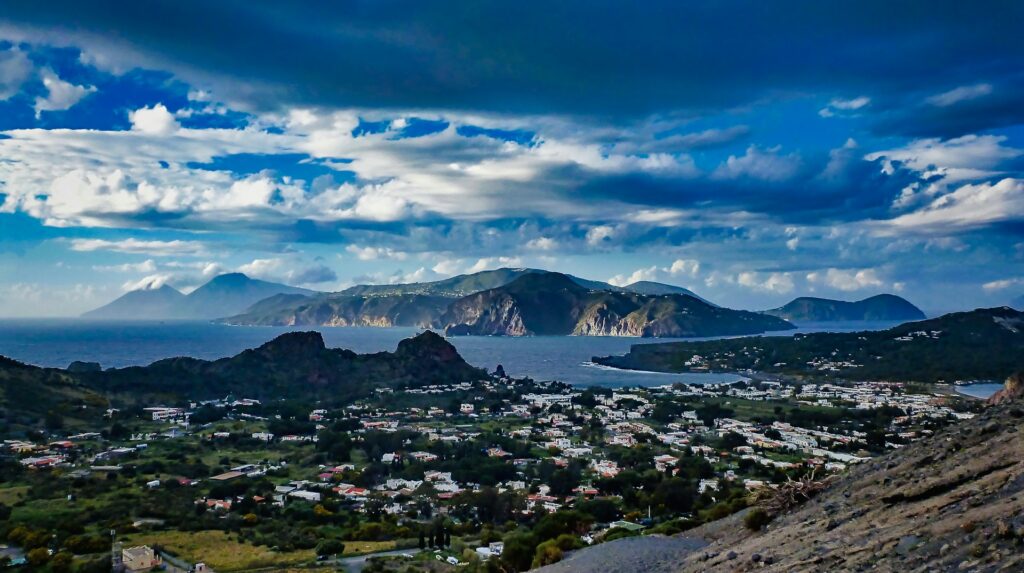
Lipari Castle and the Aeolian Museum
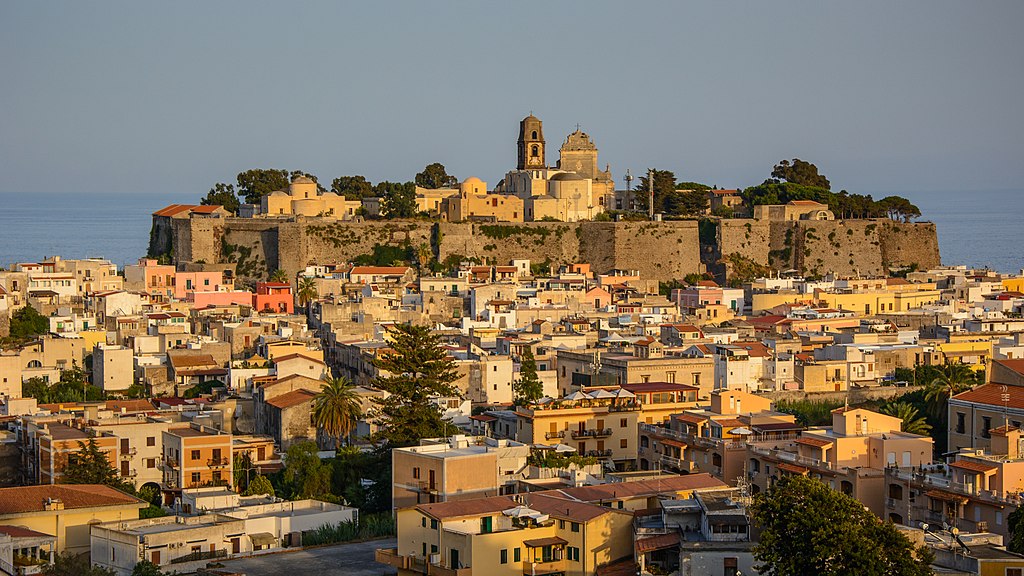
Dominating the island’s landscape, Lipari Castle is an imposing fortress built by Spanish rulers. It was erected after the pirate Barbarossa’s raid in 1544 that killed most of the men and enslaved the women.
This well-preserved fortress offers spectacular views of the entire island and the surrounding sea. Inside, the Aeolian Archaeological Museum houses an extensive collection of artifacts that tell the island’s ancient history, including Greek, Roman and Etruscan artifacts.
The center of Lipari
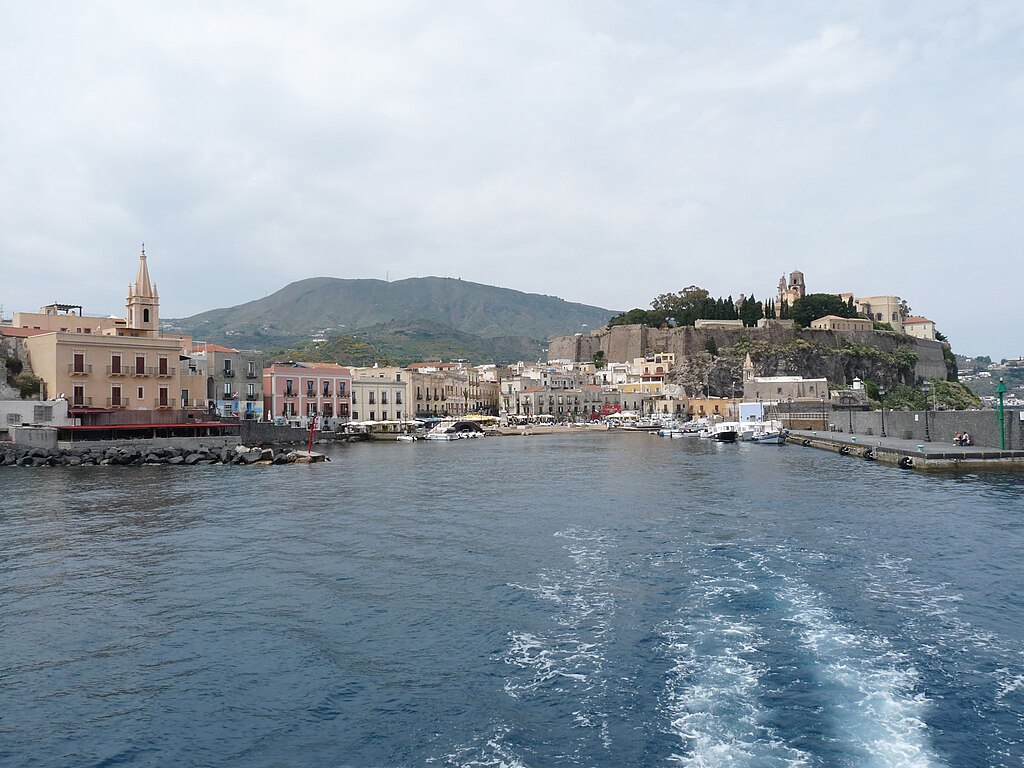
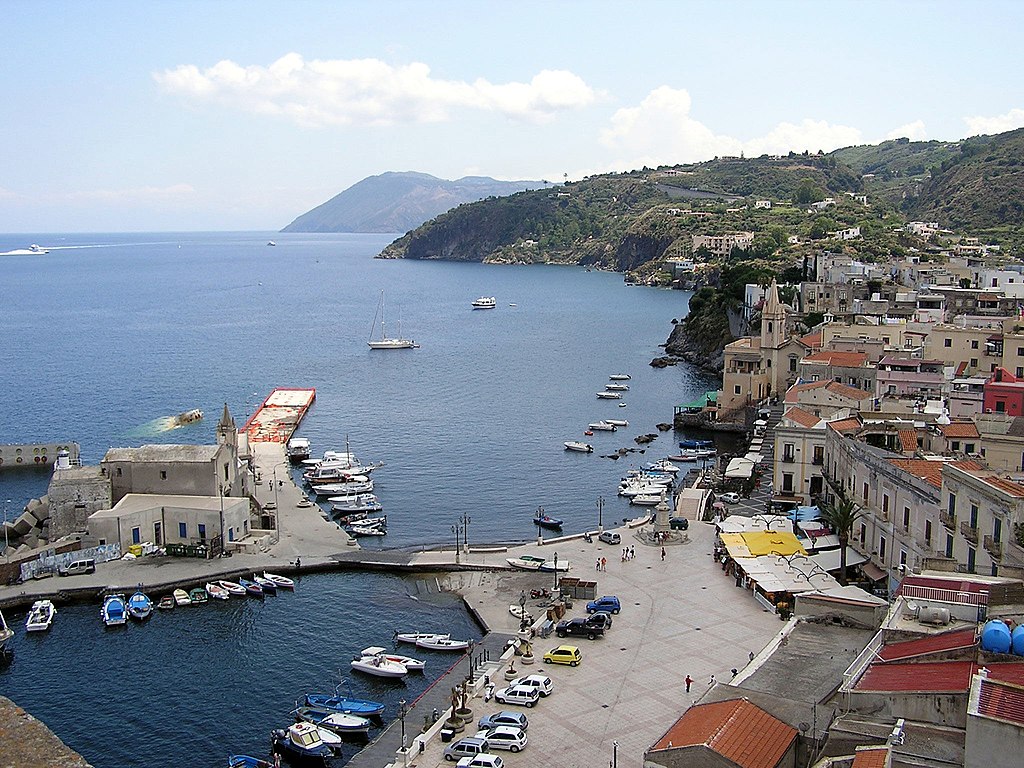
It is also very pleasant simply to walk through the center of Lipari and breathe in the relaxed atmosphere. The liveliest and busiest streets are Corso Vittorio Emanuele and the Marina Corta area.
The Cathedral of St. Bartholomew
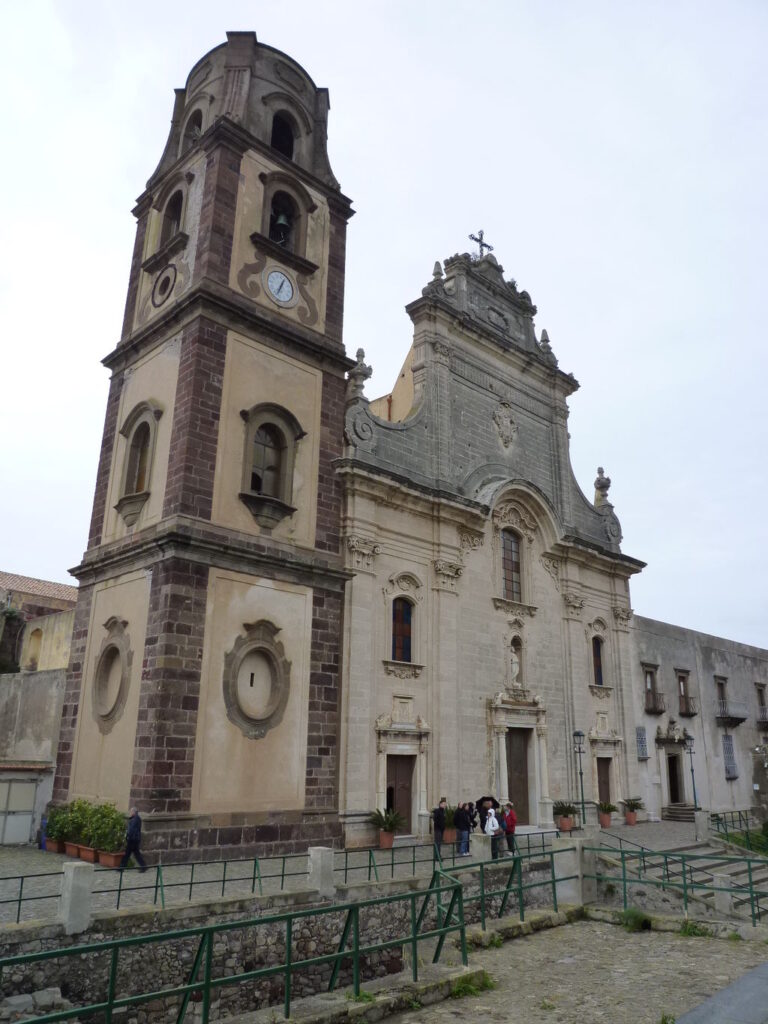
Located in the heart of Lipari’s historic center, the Cathedral of St. Bartholomew is an imposing Baroque church dating from the 16th century. The interior of the cathedral is decorated with frescoes and religious artwork reflecting the island’s rich artistic heritage. It was built to replace the Norman cathedral destroyed by Barbarossa.
In front of the Cathedral you can also see the ruins of ancient circular huts, dating back to the 17th BC. Not far away are also ancient Greek sarcophagi and an amphitheater from 1978.
Belvedere Quattrocchi
The Quattrocchi viewpoint 3km from Lipari will allow you to admire the stacks and the island of Vulcano.
Top Secret Tip: If you want to immerse yourself in nature and admire this panora more closely, I recommend the “Faraglioni and Beach Viewpoint” found on Google Maps, exactly here. To get there you need only go to theLipari Geophysical Observatory and then proceed on foot.
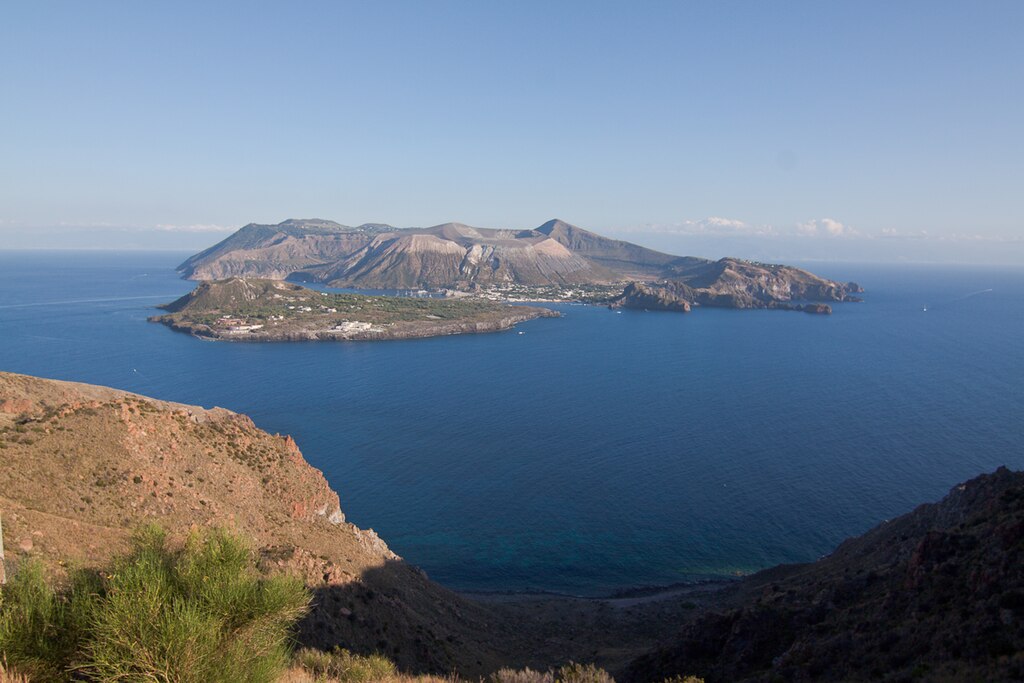
Old Church of Quattropani
From here you can see all the Aeolian islands except Vulcano. A spectacle especially at sunset.
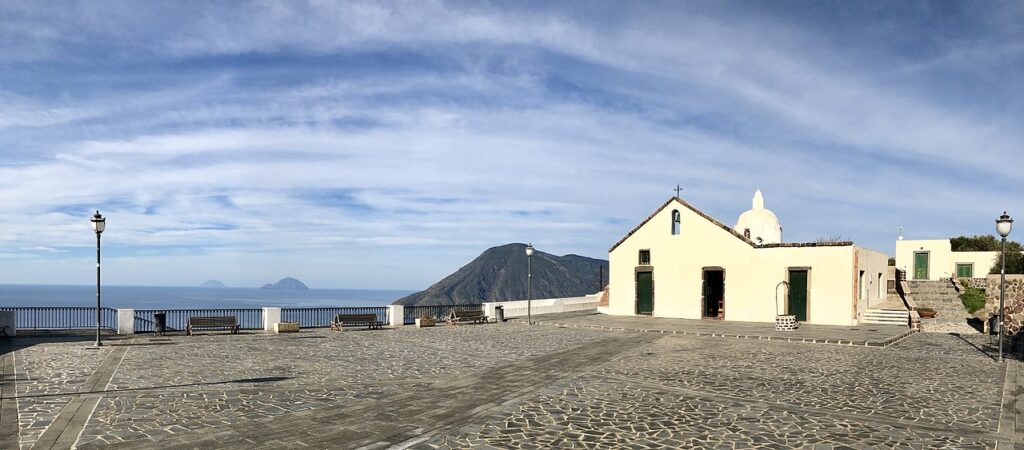
Beaches
The beaches on Lipari are mainly composed of pebbles. Therefore, I recommend that you bring beach shoes. Of course, don’t forget to bring snorkeling masks with you as well!
Canneto and Acquacalda beach
The most famous beach is Canneto and Acquacalda, which are easily accessible and also equipped with lidos and restaurants.
Top Secret Tip: The wild beach of Valle Muria and the hermit
For lovers of nature, cliffs and silence, Valle Muria beach is recommended. In this secluded place there is also a small stone house built and inhabited in solitude by an old fisherman. Here you can have something to eat and drink and learn about its incredible history.
The beach Praia di Vinci
Really very beautiful and with a magnificent view of Vulcan. It can only be reached by sea.
Nature hikes
For those who enjoy exploring nature, Lipari offers a variety of hiking trails that lead to spectacular panoramic views, volcanic craters, and breathtaking scenery. A hike to Mount St. Angelo or Mount Pilate Crater is an unforgettable experience for adventure lovers.
The boat trips
Several boat trips depart from Lipari to explore otherwise hard-to-reach beaches and nearby islands.
Volcano
Volcano was formed by the merger of 2 volcanoes, and the last eruption occurred in 1890. However, volcanic phenomena such as fumaroles and jets of steam can still be seen today.
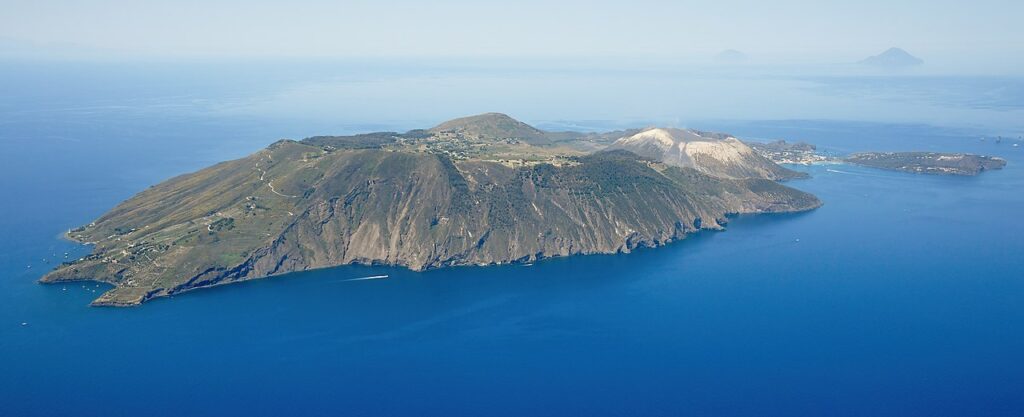
The crater and the mud pond
Begin your journey by exploring the heart of the island, its crater. A hike to the crater will give you breathtaking views of the archipelago and the Tyrrhenian Sea.
Then treat yourself to some relaxation at the mud baths, known for their therapeutic properties. Keep in mind that the smell of sulfur is very strong (It resembles rotten eggs) and it is impossible to remove the smell from the costume. Therefore, bring with you an old costume that you do not care much about. He thinks that I have a costume that after 5 years still smells of sulfur, in fact I use it for garden work! Also, don’t forget to wear flip-flops, because you might burn your feet.
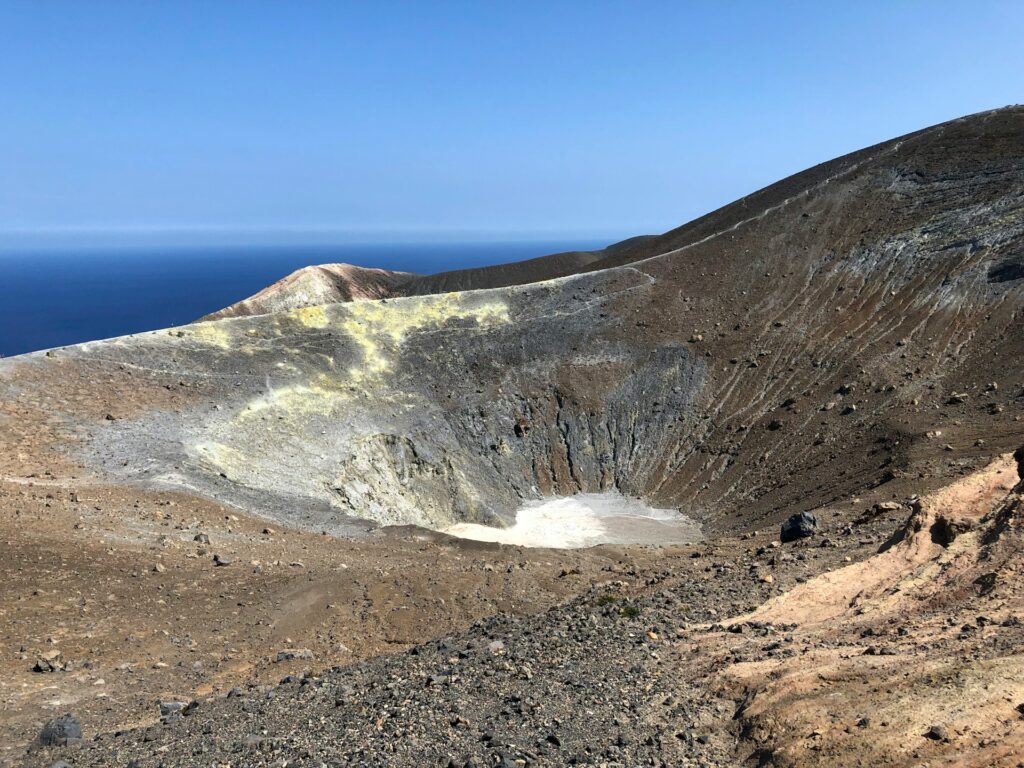
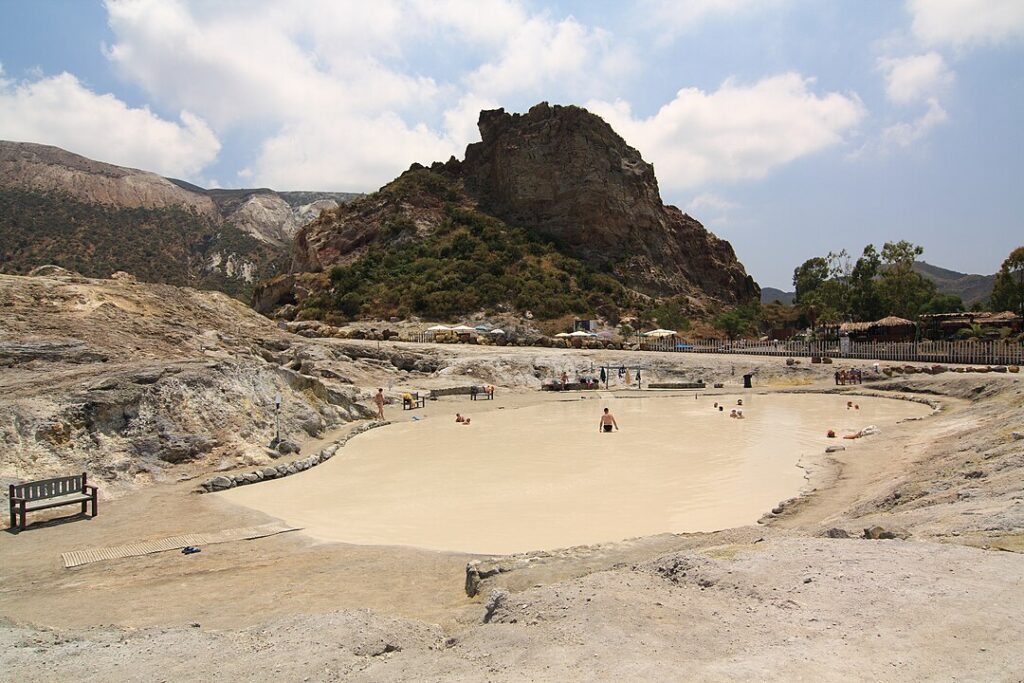
The Black Sands beach and the natural Jacuzzi
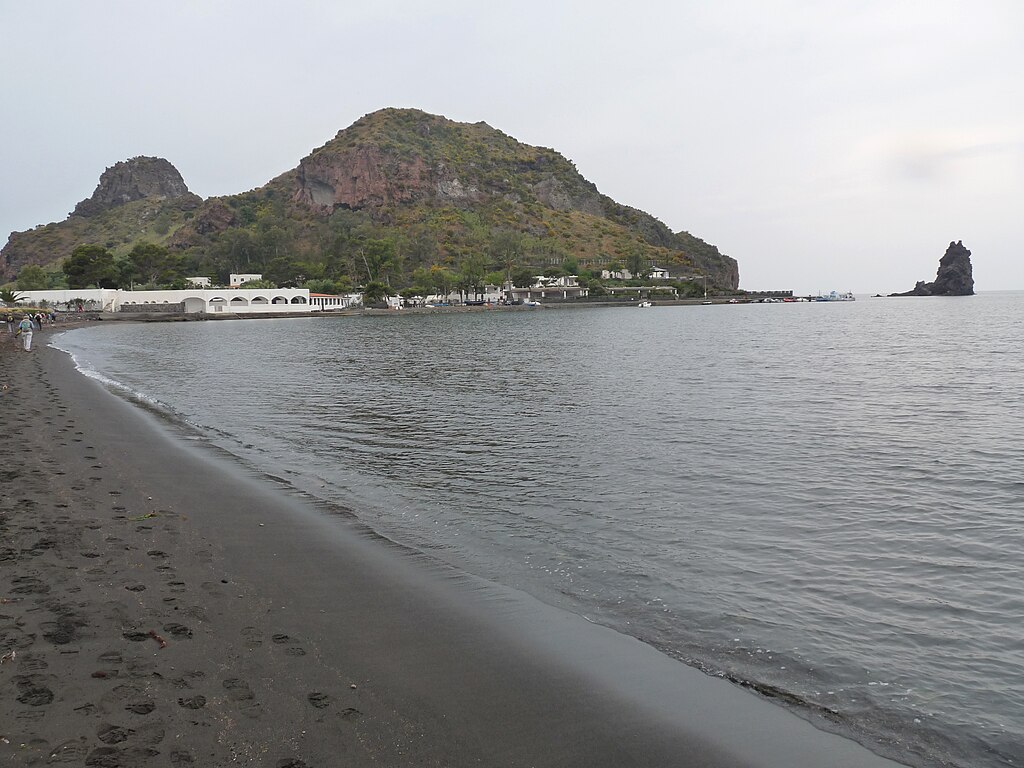
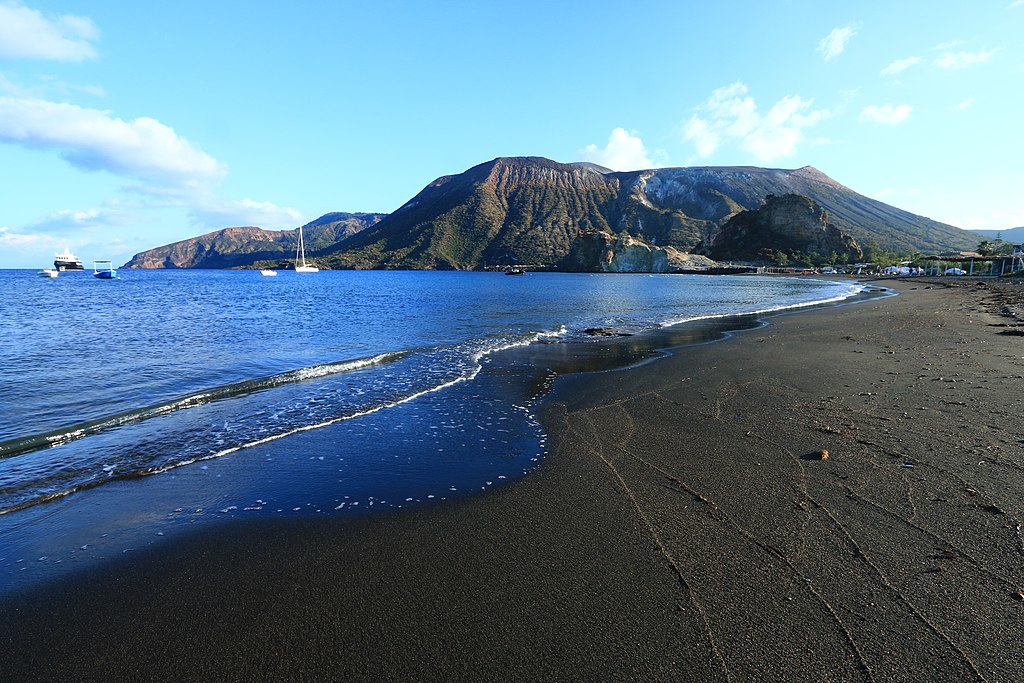
The Black Sands beach is very original. It is not far from the thermal mud baths and consists of black volcanic sand. Not far away, on the opposite side, is Acque Calde beach. Here in some parts of the sea water bubbles up due to gas emissions from the seafloor. A real natural Jacuzzi!
The Gelso marina and the Asina beach
Gelso, located south of Vulcano is a tiny harbor featuring a cozy restaurant and a small black sand beach. The eighteenth-century church of Santa Maria delle Grazie and a now disused lighthouse are also located here.
A little further upstream (north) from the harbor, a steep, dirt path leads to Asina Beach, a beautiful black sand cove. Here you will also find a lido and an excellent restaurant.
Vulcanello – The Valley of Monsters
Also very pretty is the Valley of the Monsters, an area characterized by bizarre and striking rock formations sculpted by past volcanic activity. However, keep in mind that unfortunately the trail is not always kept in good condition. Forward it is recommended to go with comfortable tennis shoes and plenty of water.
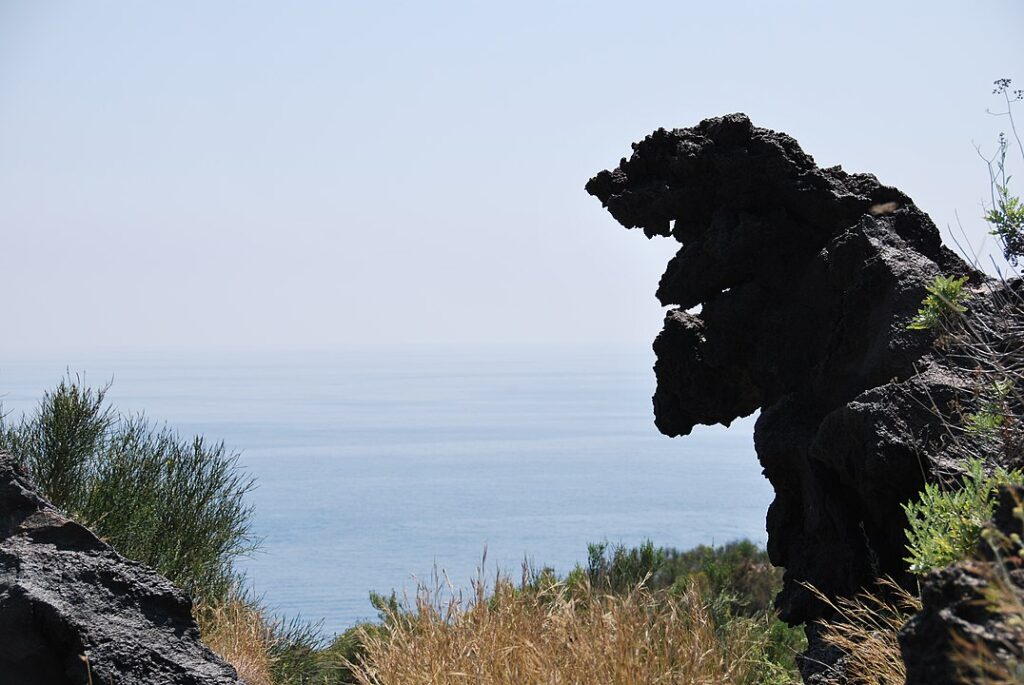
Chief Cricket
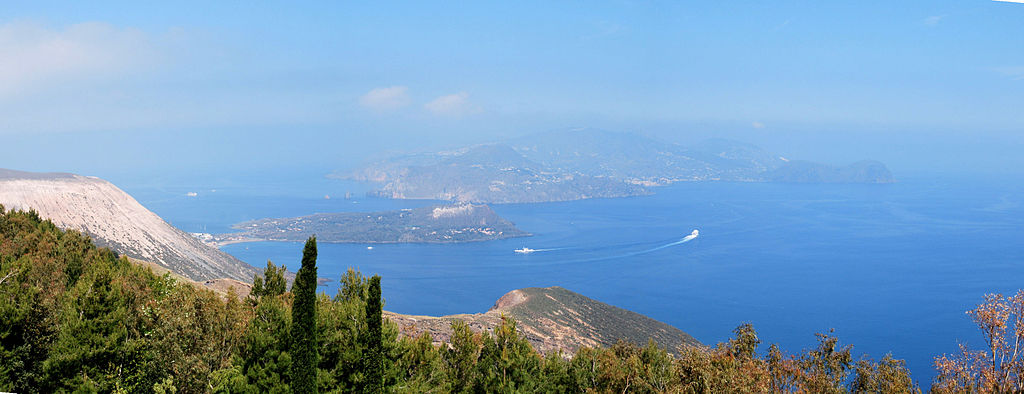
To admire stunning scenery, I recommend you follow the directions to Cape Grillo, about 7 kilometers southeast of Vulcan’s inland harbor. From this location, you can enjoy spectacular views of Lipari and Salina, with Panarea, Stromboli and Filicudi silhouetted on the horizon.
Stromboli
Stromboli is after 2,000 years a still active volcano. Just think that 3 to 7 explosions are recorded per hour, which you can even admire from the sea aboard a boat. Especially in the evening it is one of the most beautiful experiences one can have.
Despite frequent eruptions, the island is inhabited, since however the lava flows are all concentrated on one specific side of the volcano. The island is certainly fascinating, but life is not very easy here. He thinks that supplies and drinking water arrive by sea, there are no roads running all over the island, and until a few years ago the village of Ginostra even lacked electricity.

Trekking to the Crater of Stromboli
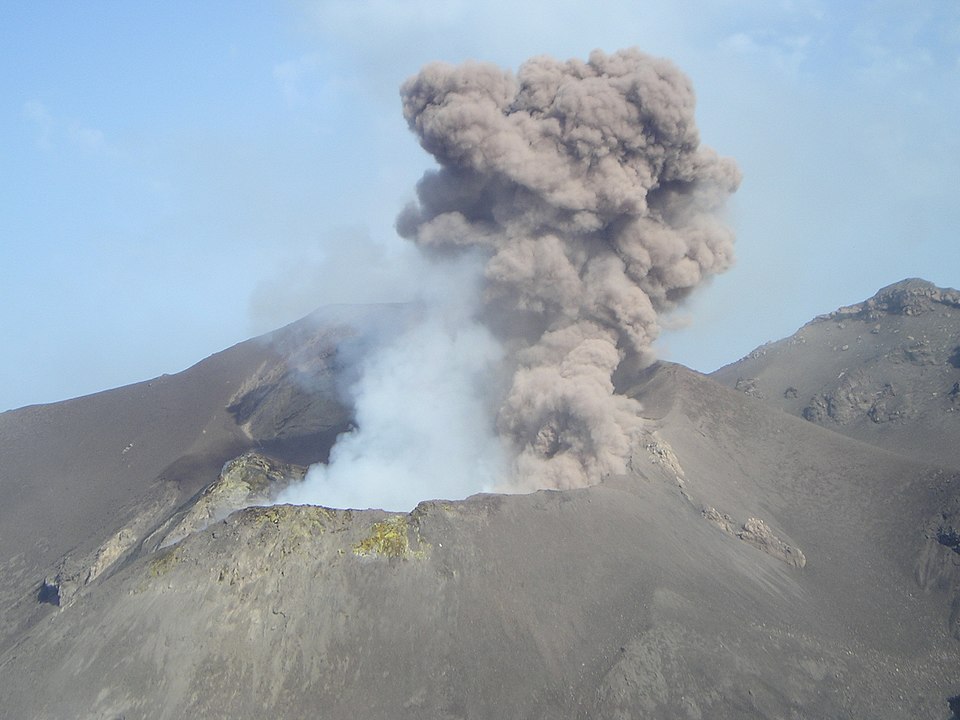
For those who enjoy adventure, a hike to the crater of Stromboli is an opportunity not to be missed. The trek, although challenging, offers spectacular views of the eruption and surrounding islands. During the period of activity, explosions occur about every 20 minutes and are preceded by loud booms. Sometimes, during particularly intense explosions, rocks of magma plummet down the slope until they plunge into the sea with a roar.
Guided tours of the Crater
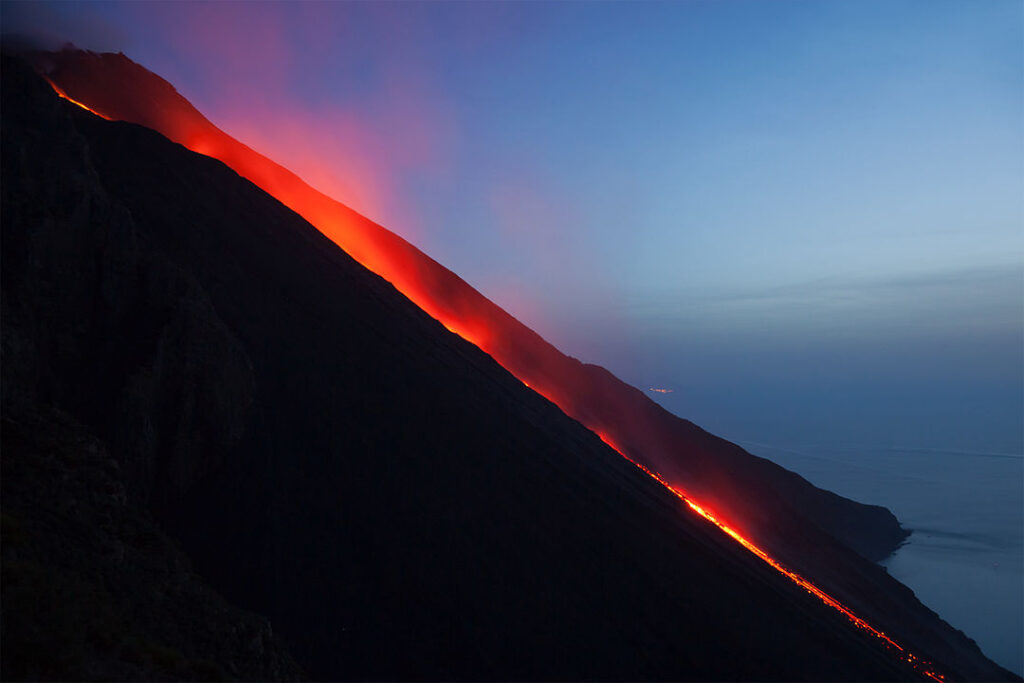
It is advisable to leave with an experienced guide to ensure a safe ascent and fully enjoy this unique experience.
The climb takes about 3 hours, while the return takes a maximum of 2 hours. Organized excursions leave daily in the afternoon. It goes all the way to the summit at 924 meters, and from there at sunset you can watch the volcano’s explosions for 45 minutes.
Unguided tours of the Crater
Up to 400 meters can be walked freely without guidance. It will take you about an hour to reach the first viewpoint, and although from a distance you can admire the volcanic activities (Especially fascinating at sunset). The trail starts in Piscità, and on the way back, halfway there, you can rest and eat a good pizza from theObservatory.
The beaches of Stromboli
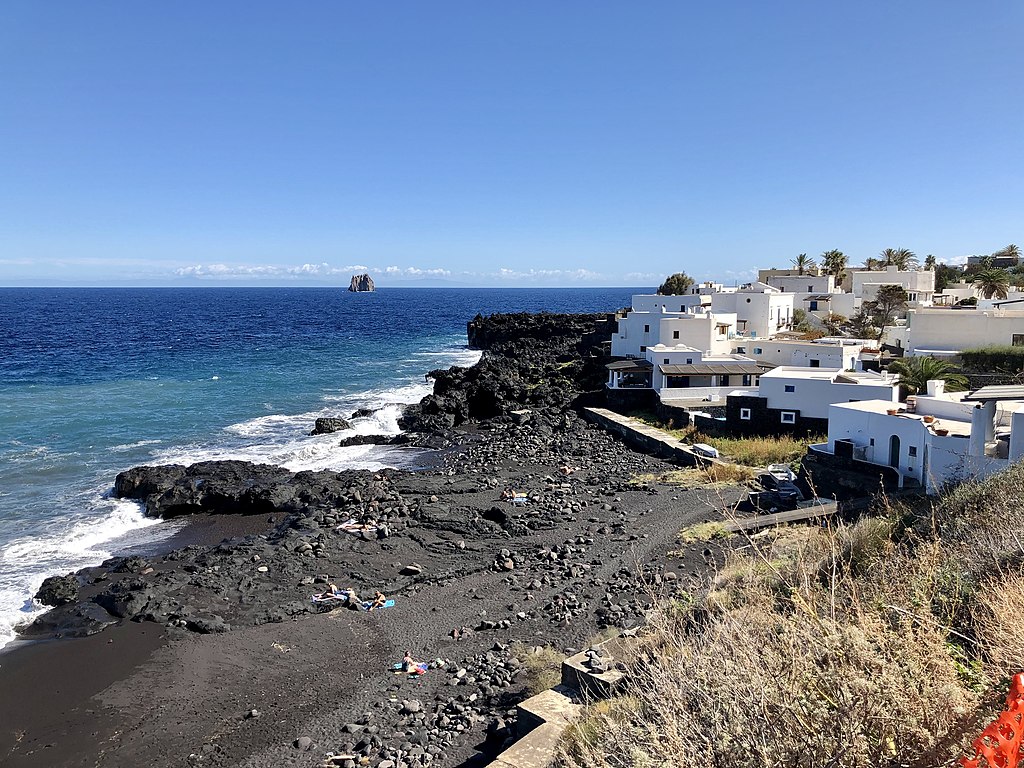
Stromboli also boasts some of the most beautiful beaches in the Aeolian archipelago. The contrast between their black color and the little white houses that overlook them is truly fascinating. Among the most famous are Scari beach, Forgia Vecchia beach, Ficogrande beach, and Lunga beach.
The former is located near the hydrofoil port and is therefore the easiest to reach. About 300 meters south of it is the beach of Forgia Vecchia. It is quieter and consists of black pebbles lying at the foot of the green slopes of the volcano.
Ficorgrande Black Beach is a strip of volcanic rock and sand only about 10 minutes from the hydrofoil pier, heading north.
Finally, the furthest away is Lunga beach, about 2 km west of Stromboli harbor.
Exploration of the villages of Stromboli
Explore Stromboli’s picturesque villages, such as San Vincenzo and Ginostra, to immerse yourself in daily life on the island. Here you can admire colorful houses, narrow winding streets, and take relaxing walks.
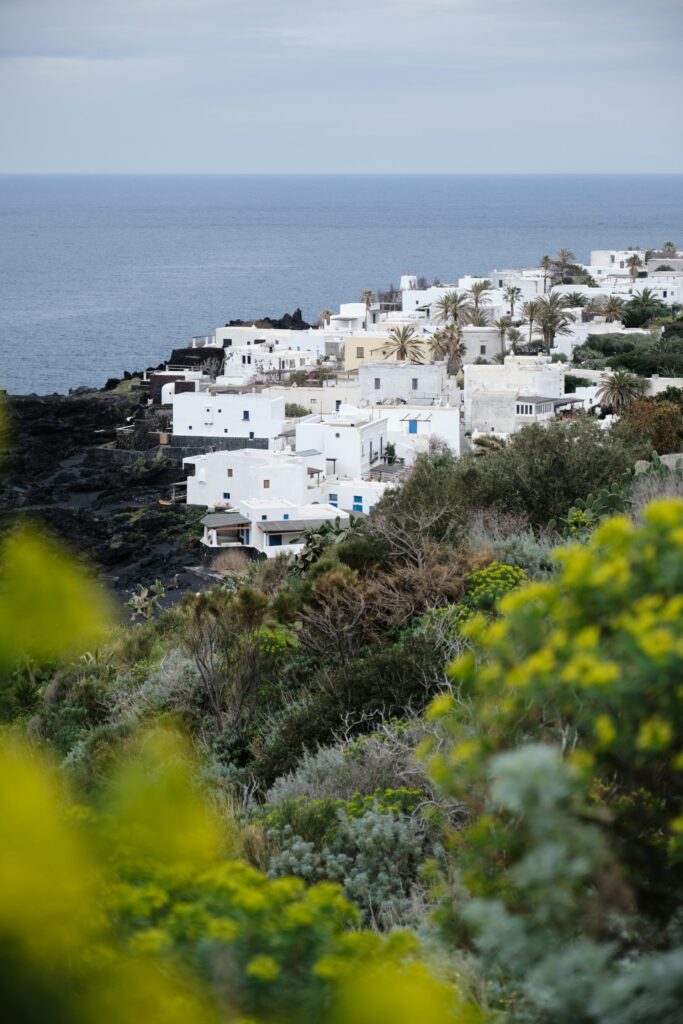
Panarea
Panarea is known as the island of VIPs, so it is also quite expensive. In summer it is the center of nightlife and is very busy, despite being the smallest island in the Aeolian Islands.
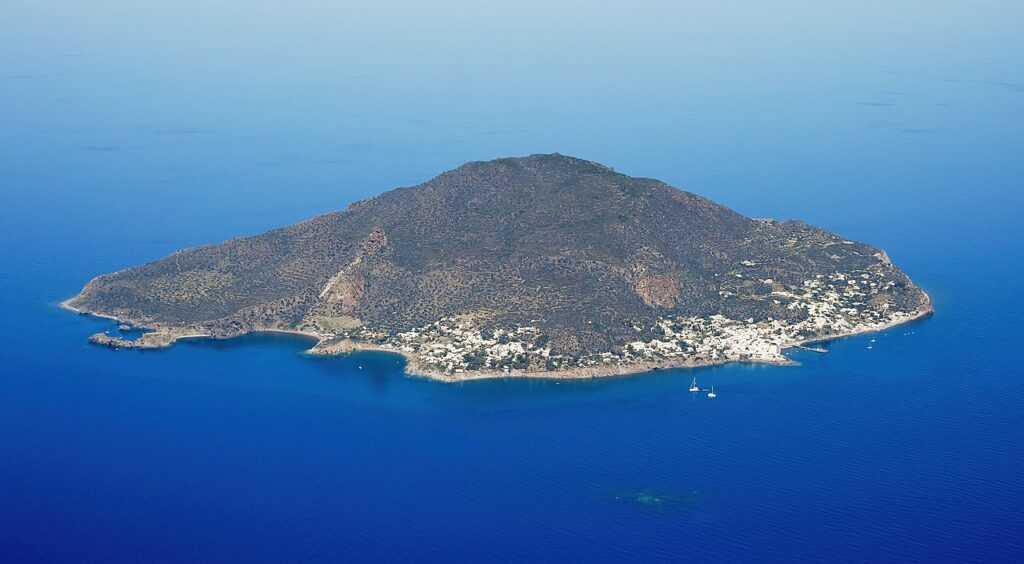
Cala Junco
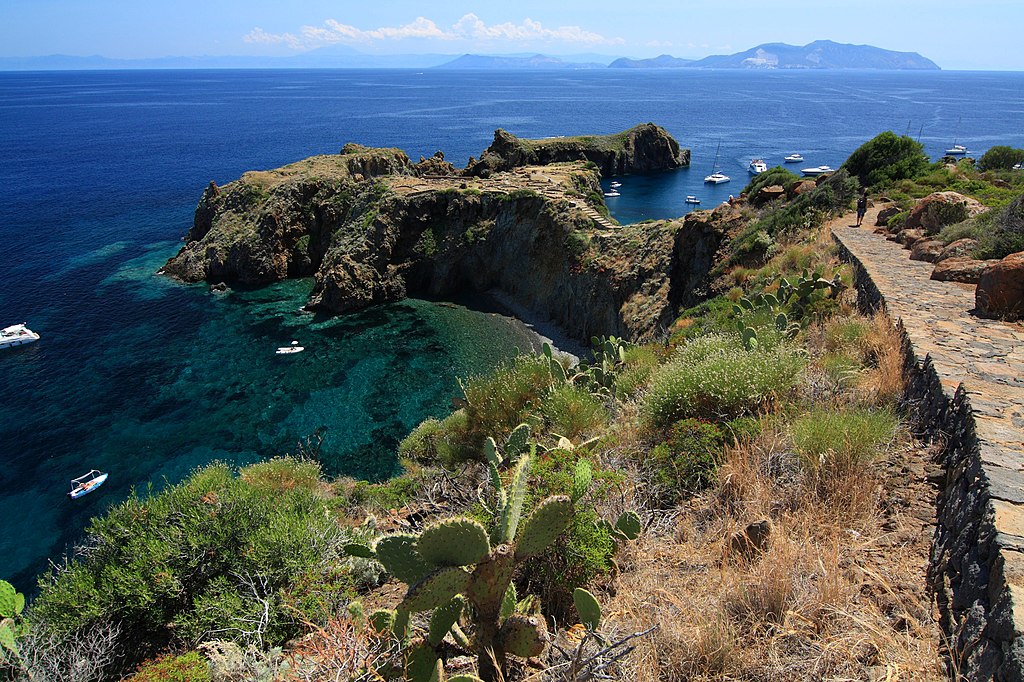
One of Panarea’s most beautiful and picturesque beaches, Cala Junco is a hidden cove with crystal clear waters and surrounded by rocky cliffs. Accessible only by sea or via a hiking trail, this bay offers unparalleled tranquility and beauty.
Zimmari Beach
Located along the island’s northwest coast, Zimmari Beach is one of Panarea’s most popular beaches. Featuring golden sand and shallow waters, this beach is perfect for swimming, sunbathing and enjoying the breathtaking views.
St. Peter’s
The picturesque village of San Pietro is the beating heart of Panarea, with its narrow, winding streets, whitewashed houses, and chic restaurants. Lose yourself in the streets of the village, admiring the beautiful sea views and discovering upscale boutiques and trendy cafes along the way.
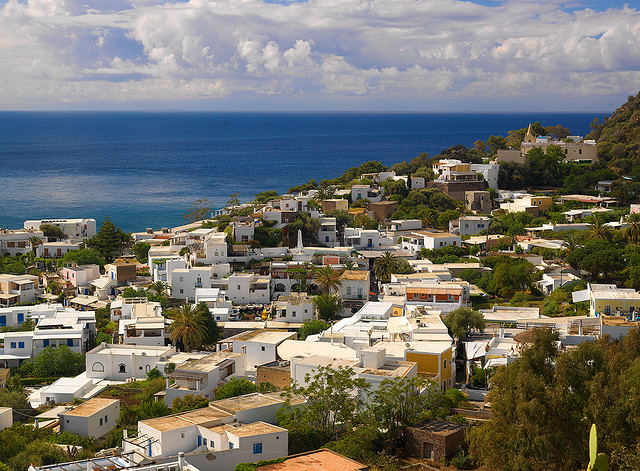
Drautto
Located on the northeast coast of Panarea, Drautto is a charming fishing village that still retains its traditional charm. Explore the narrow cobblestone streets, admire the old fishermen’s houses, and stop at one of the quaint local restaurants to sample fresh seafood and traditional Sicilian cuisine.
Raven’s Point
For adventure seekers, a hike to Punta del Corvo offers spectacular views of the island and surrounding archipelago. Calculate about 4 hours for the full circuit.
Islets off Panarea
Near Panarea there are 5 islets all of which can be visited by boat. The nearest is Dattilo, while the largest is Basiluzzo, which is cultivated entirely with capers.
Top Secret Tip: A wreck of a nineteenth-century British ship lies in the seabed near Bottaro islet. If if interested dives are organized at Amphibia.
Punta Milazzese – Prehistoric Village
Here you can see the foundations of a prehistoric village, 23 oval stone huts from the Bronze Age.
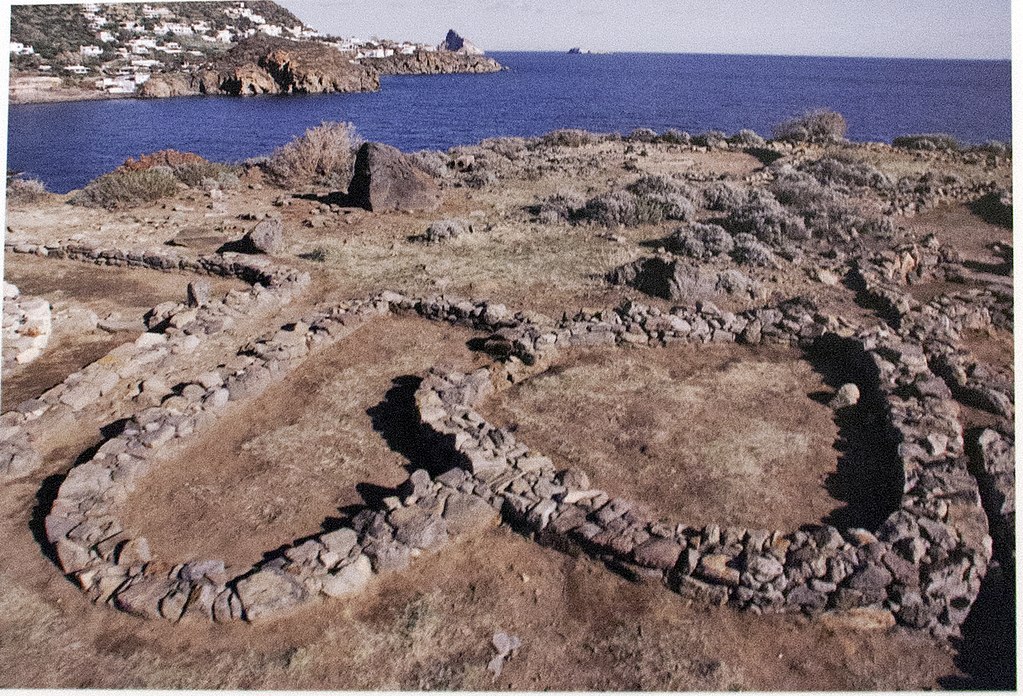
Feast of St. Peter
The island’s patron saint St. Peter is celebrated on June 29. A festival not to be missed, with folk dancing, boat races and lots of good food. On June 30, the statue of the saint is carried on the shoulders and prayers are sung. He thinks that the statue is also put on a boat and the procession then continues by sea. This testifies to how very strong the connection with the sea is for the inhabitants of these islands.
Salina
Salina was called of Greeks Didyme (Twins) because of the shape of the 2 volcanoes, now no longer active. These are Monte dei Porri (860 m) and Monte Fossa delle Felci (962 m). Instead, the name now comes from the Lingua salt pans at the southeastern end of the island. The film “Il Postino” inspired by Chilean poet Pablo Neruda was also shot here.
Unlike the other Aeolian islands, the landscape in Salina is more lush, thanks to the presence of freshwater springs.
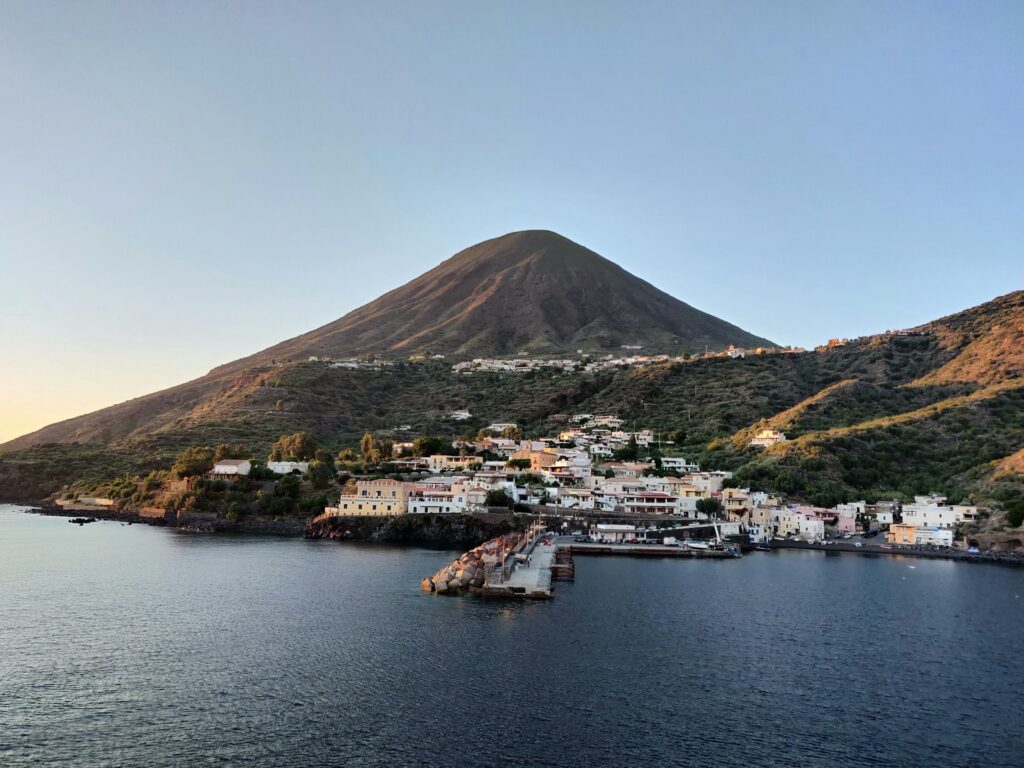
Santa Marina Salina
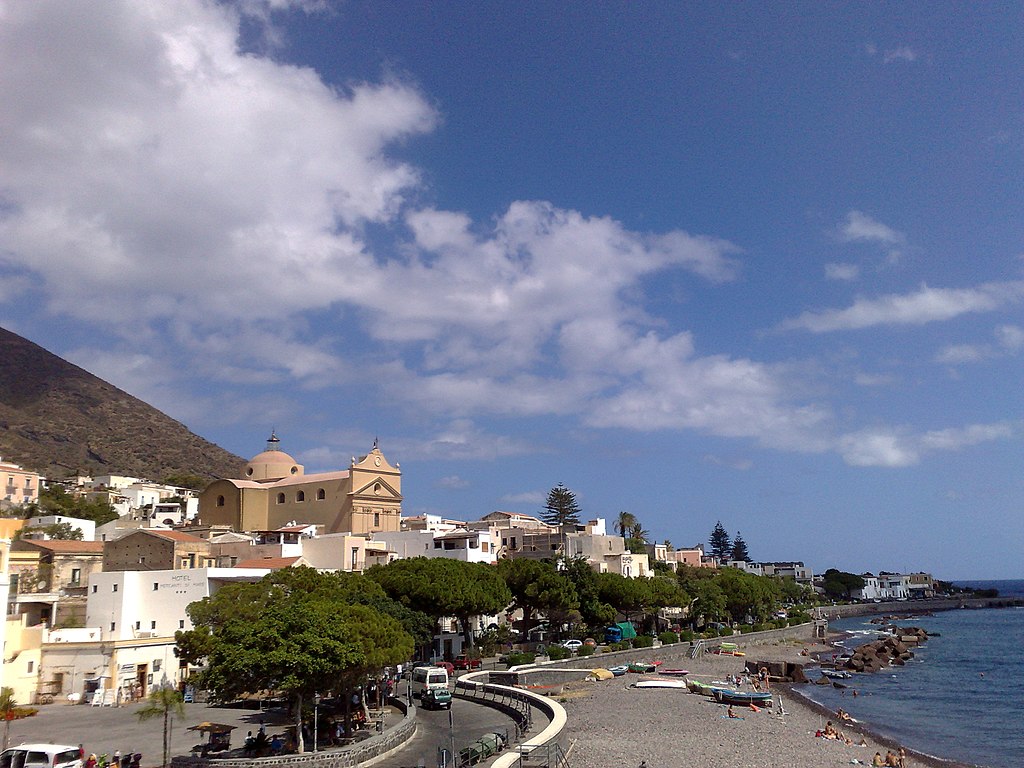
Salina’s bustling main town, Santa Marina Salina, is a charming seaside village that boasts a picturesque waterfront, a bustling central square, and a selection of cozy boutiques, restaurants, and cafes.
Language
Located about 2 miles south of Santa Marina Salina, in the quiet village of Lingua you’ll find a couple of hotels, a few restaurants and a small beach. The main attraction is the saltwater lagoon at the foot of an old lighthouse. Think that from Roman times until a few years ago there was a salt marsh in this lagoon. Instead, today it is in spring and fall the stopping point for many migratory birds from Africa or northern Europe.
Pollara Beach
One of the most original beaches is that of Pollara. It is a small strip of beach at the foot of old fishermen’s houses built into the rock.
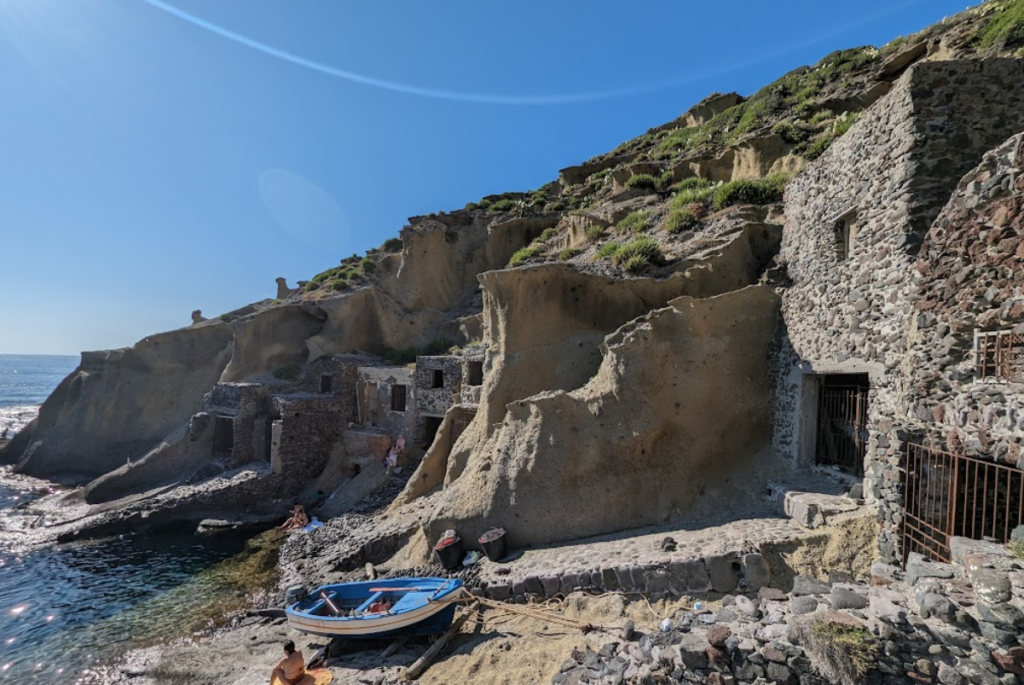
Mount Fern Pit
At 968 meters high, Mount Fossa delle Felci is the highest point on Salina and offers breathtaking views of the island and the entire archipelago. Hikers can follow well-marked trails to the top of the mountain, passing through fern forests, chestnut forests and spectacular panoramic views along the way.
Malvasia Tasting
The presence of freshwater sources have allowed Salina to have lush vegetation. The inhabitants have also made good use of it; in fact, the island is famous for its Malvasia wine production. This is a sweet, aromatic wine made from local grapes grown on the island’s terraces. It is believed that it was the Greeks who imported the vine to the islands in 588 B.C. and the that the name was derived from Monemvasia, a Greek city.
Alicudi
Alicudi is one of the most remote islands in the Mediterranean. There are few houses and no roads apart from small paths. Here we travel only by boats at sea and mules on land.
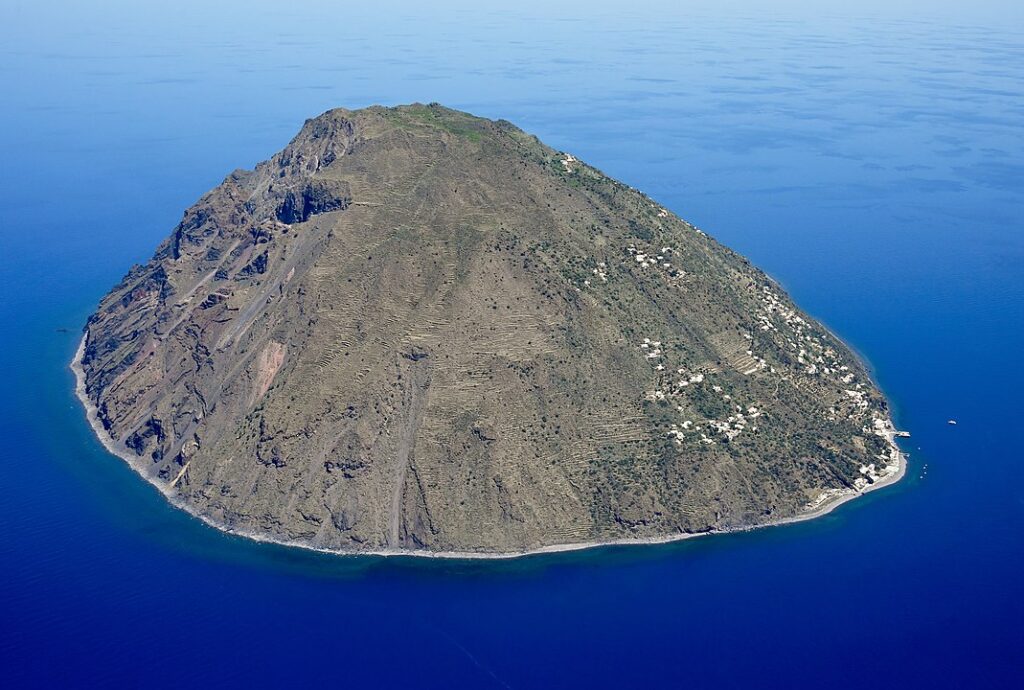
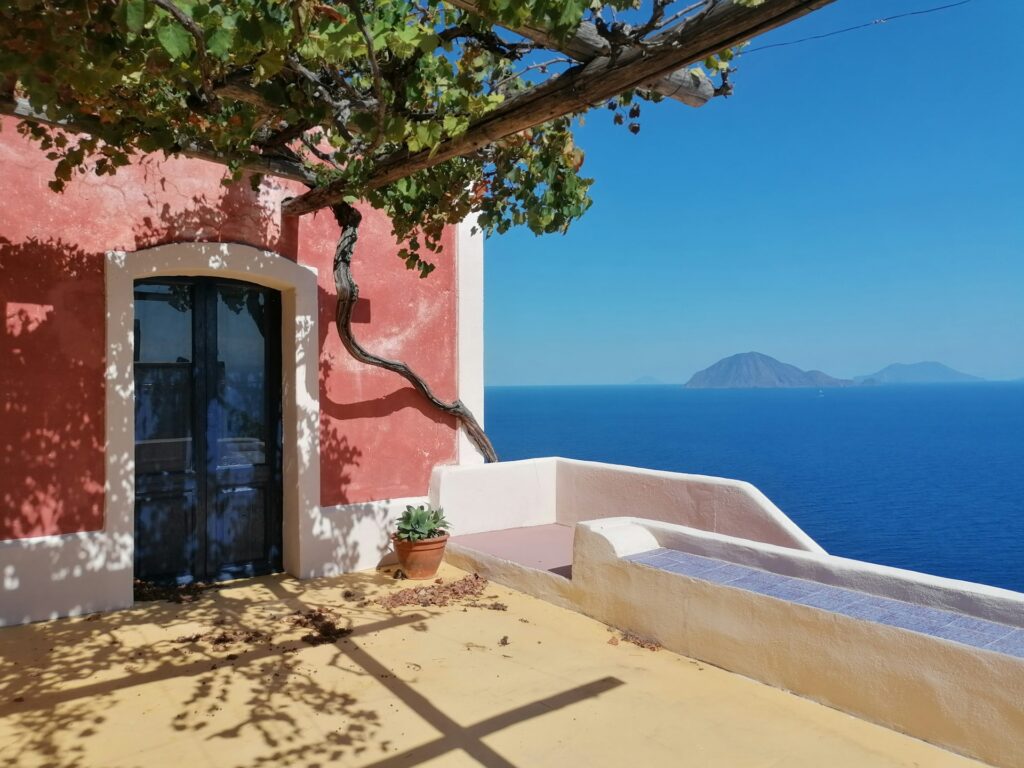
Alicudi Port
Alicudi’s main village, Alicudi Porto, is a charming collection of cobblestone streets, traditional houses, and scenic terraces that offer spectacular views of the sea. Walking through its narrow streets is a unique experience, where one is completely immersed in the authentic atmosphere of the island and can encounter the warm hospitality of its inhabitants.
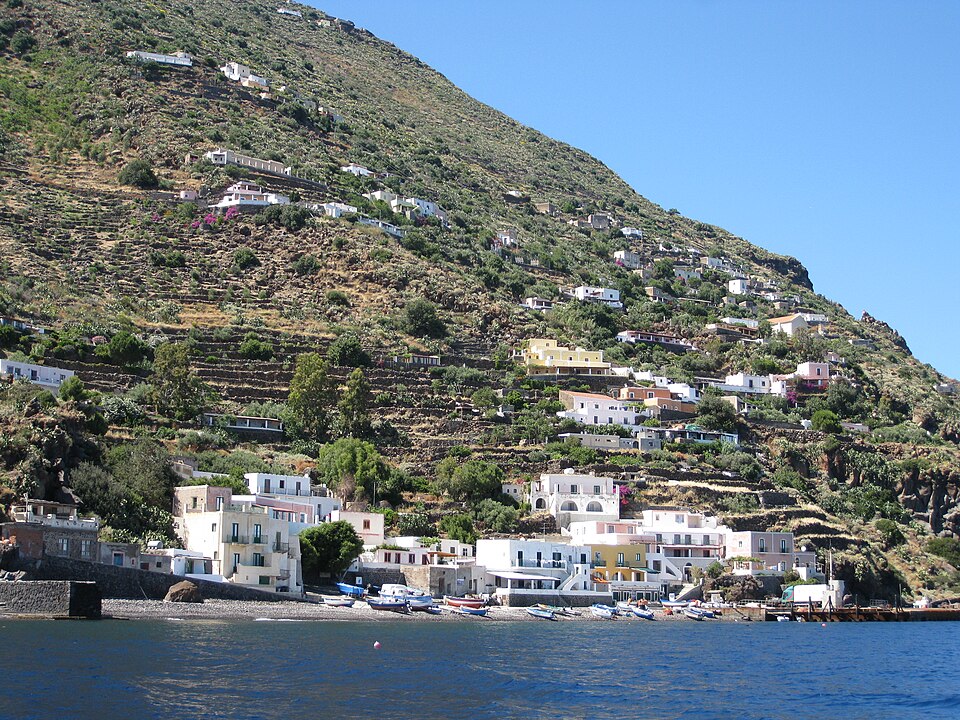
The churches
In Alicudi you can also explore two beautiful old churches. These are the Church of St. Bartholomew the Apostle, which overlooks the village, and the Church of Our Lady of Mount Carmel.
The paths
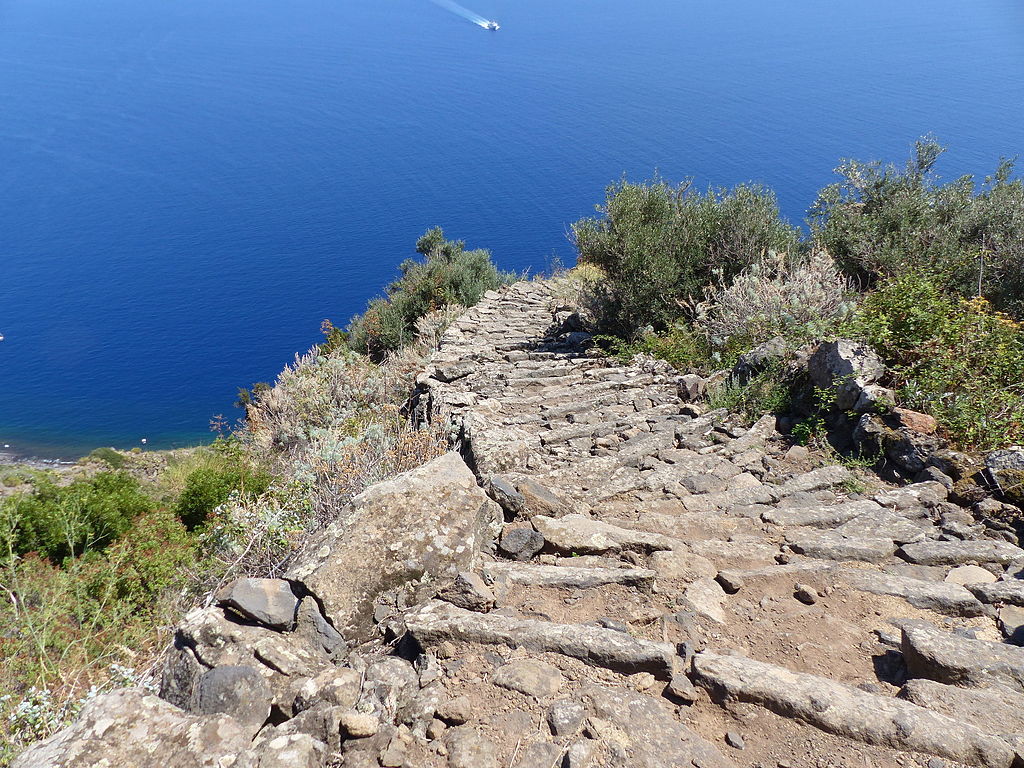
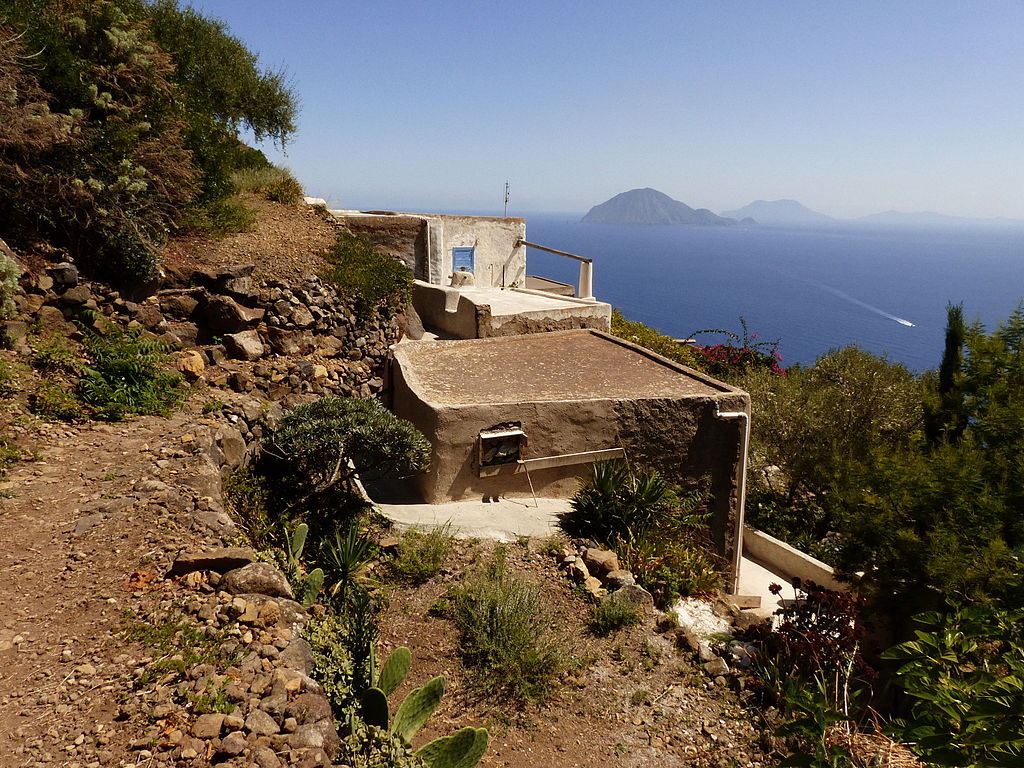
The trails in Alicudi are quite strenuous, as they are all uphill. However, they allow you to explore its unspoiled nature and breathtaking landscapes.
Beaches
Beaches in Alicudi consist of pebbles, so beach shoes are recommended. The main one is located near the harbor, while if you are looking for even more privacy, you can go to the Bazzina beach. This is reached by following the beautiful 1-kilometer path from the harbor.
Filicudi
Filicudi is one of the least touristy islands in the archipelago and also one of the oldest, dating back crica 700,000 years.
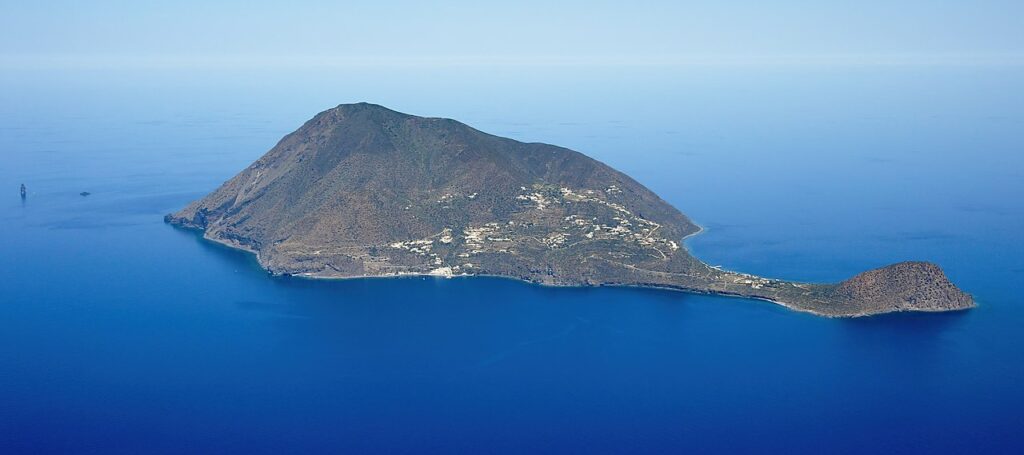
The stacks the Cane
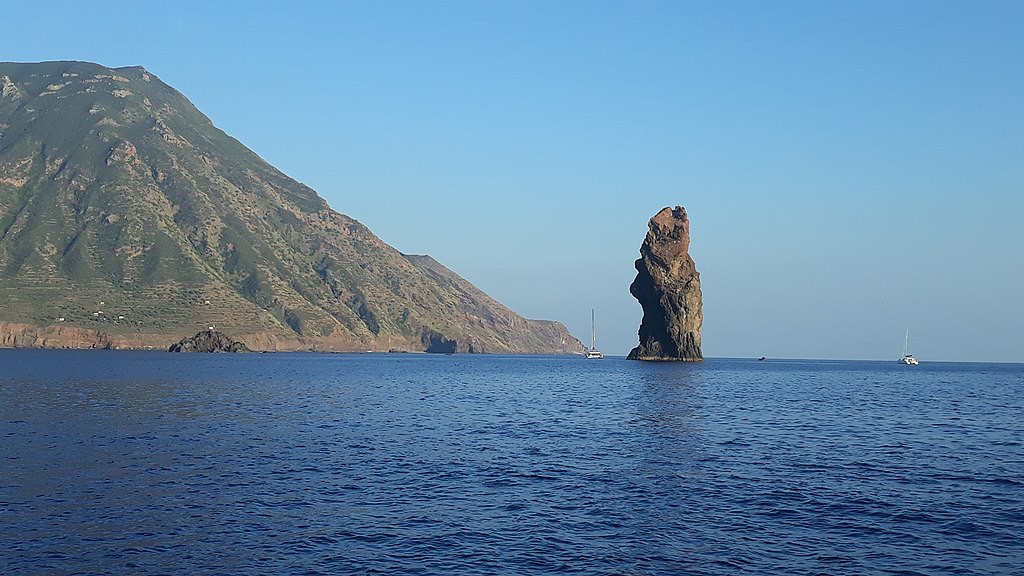
One of Filicudi’s most iconic attractions is La Canna, a majestic column of volcanic rock rising from the sea off the island’s northwest coast. This unique rock formation is a must-see attraction for nature lovers and offers spectacular scenery for boat trips and snorkeling.
Sea Ox Cave
Hidden among the rocky cliffs of Filicudi’s southern coast, Sea Ox Cave is a sea cave that offers a unique underwater exploration experience. Its crystal-clear waters and life-rich seabed make this an ideal place to snorkel and discover local marine life.
Prehistoric village
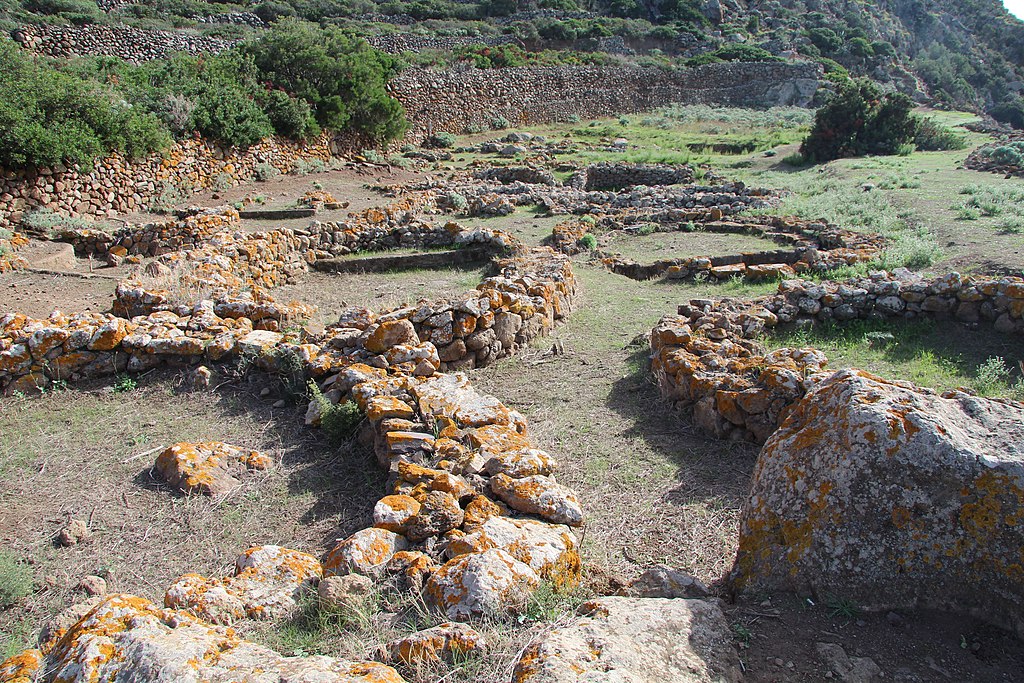
These are as many as 27 ancient huts dating back to the Bronze Age, located on a natural terrace on a hillside. These remains date back to 1700 B.C., or three hundred years before the village of Punta Milazzese in Panarea.
The archaeological museum
Filicudi is also home to a small free museum. Here you can learn about the history of the island and admire reports from as early as the Bronze Age.
The underwater archaeological museum
If you have a level 2 scuba diving license you can visit with a guide, the wrecks of as many as 9 Greek and Roman ships, which lie near Filicudi. For information and reservations call the agency I Delfini at 0039 090/9889077 or visit the website www.idelfinifilicudi.com/museo-sottomarino. The agency also organizes nice boat excursions.
The trails along the nature reserve
Filicudi is home to a beautiful nature reserve rich in Mediterranean plants. There you will find many paths to walk in the middle of greenery overlooking the blue sea.
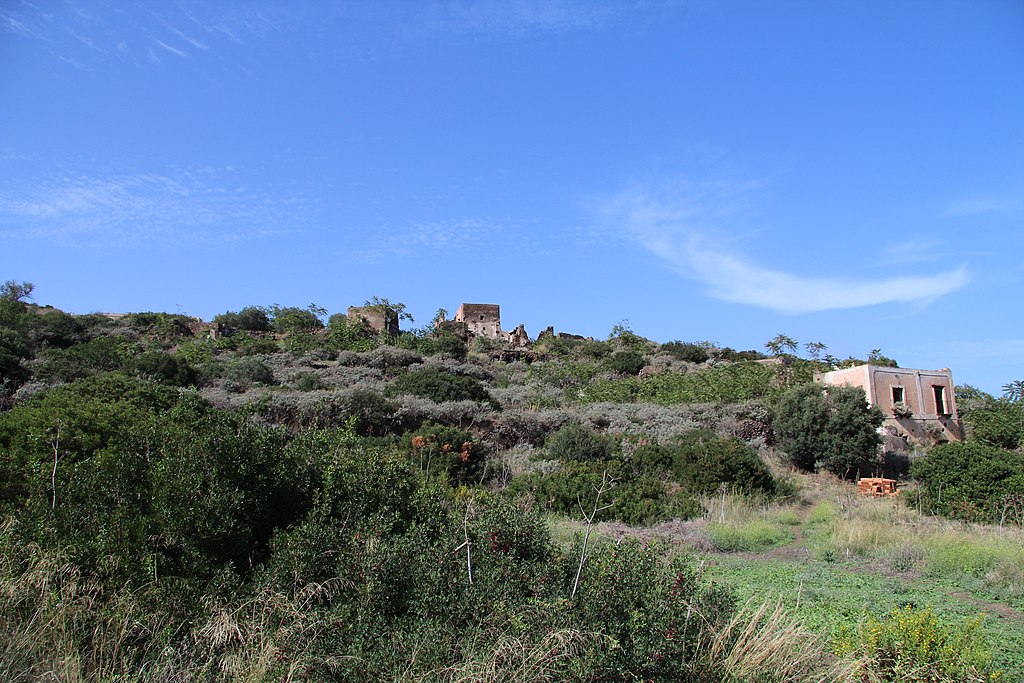
How to Get to the Aeolian Islands

To get to the Aeolian Islands, one must take a ferry or hydrofoil from the port of Milazzo. The latter can be reached from Catania airport by direct shuttles.
Ferry
The most common way to reach the Aeolian Islands is via ferry from Milazzo on the Sicilian coast. There are regular ferry services connecting Milazzo with the various islands of the archipelago. Travel time varies depending on the destination, but is generally about 1-2 hours. If you take the ferry, you can also take your car with you.
For info and reservations: https://www.traghettilines.it
For a faster option you can take a hydrofoil from Milazzo. Hydrofoils are faster than ferries and take about 30 minutes to reach the Aeolian Islands, but are generally more expensive.
Hydrofoil
For info and reservations: https://www.libertylines.it
Helicopter
If you wish, you can even reach the Aeolian Islands by helicopter, a service offered by Airpanarea. Departures are from Catania and Palermo airports and landing is at Lipari .
For info and reservations: info@airpanarea.com / +39 347 971 93 24

